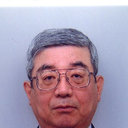Alteration of protein expression profile following voluntary exercise in the perilesional cortex of rats with focal cerebral infarction.
Keywords
Abstract
Identification of functional molecules in the brain related to improvement of the degree of paralysis or increase of activities will contribute to establishing a new treatment strategy for stroke rehabilitation. Hence, protein expression changes in the cerebral cortex of rat groups with/without voluntary exercise using a running wheel after cerebral infarction were examined in this study. Motor performance measured by the accelerated rotarod test and alteration of protein expression using antibody microarray analysis comprised 725 different antibodies in the cerebral cortex adjacent to infarction area were examined. In behavioral evaluation, the mean latency until falling from the rotating rod in the group with voluntary exercise for five days was significantly longer than that in the group without voluntary exercise. In protein expression profile, fifteen proteins showed significant quantitative changes after voluntary exercise for five days compared to rats without exercise. Up-regulated proteins were involved in protein phosphorylation, stress response, cell structure and motility, DNA replication and neurogenesis (11 proteins). In contrast, down-regulated proteins were related to apoptosis, cell adhesion and proteolysis (4 proteins). Additional protein expression analysis showed that both growth-associated protein 43 (GAP43) and phosphorylated serine41 GAP43 (pSer41-GAP43) were significantly increased. These protein expression changes may be related to the underlying mechanisms of exercise-induced paralysis recovery, that is, neurite formation, and remodeling of synaptic connections may be through the interaction of NGF, calmodulin, PKC and GAP43. In the present study at least some of the participation of modulators associated with the improvement of paralysis might be detected.


